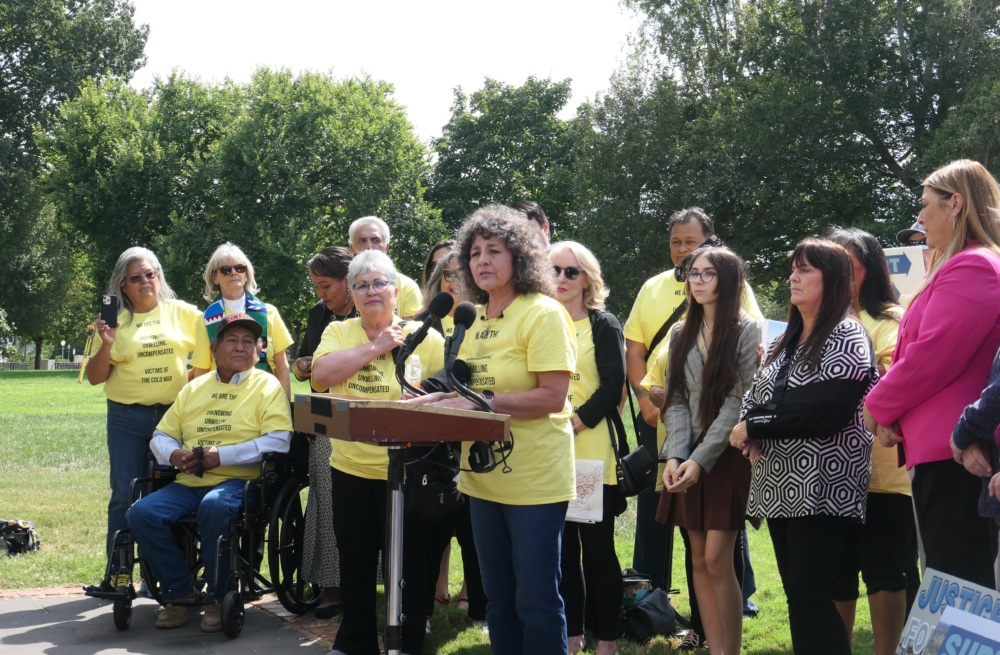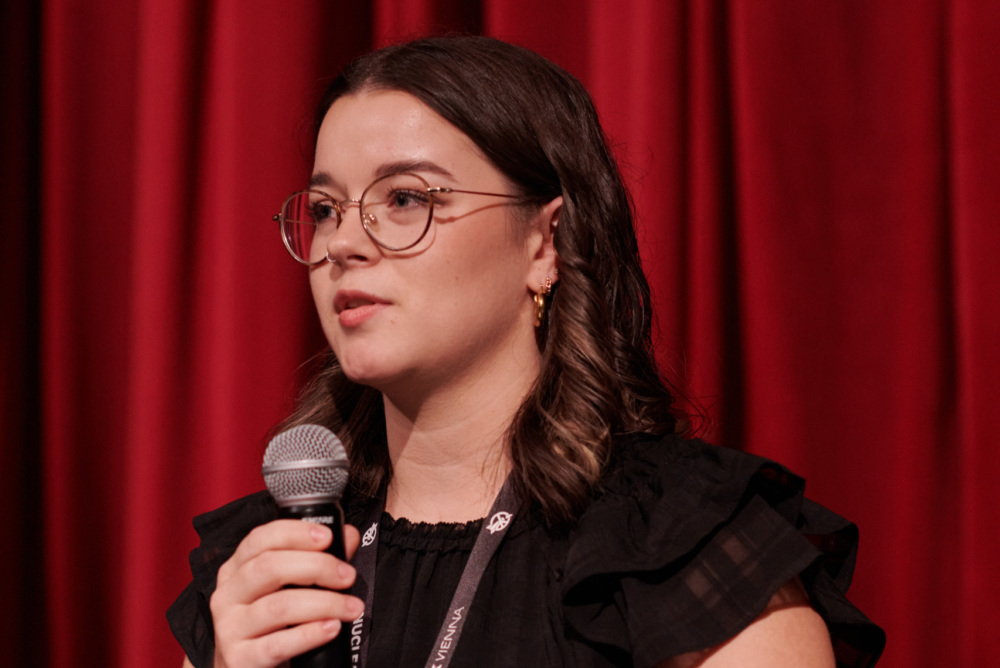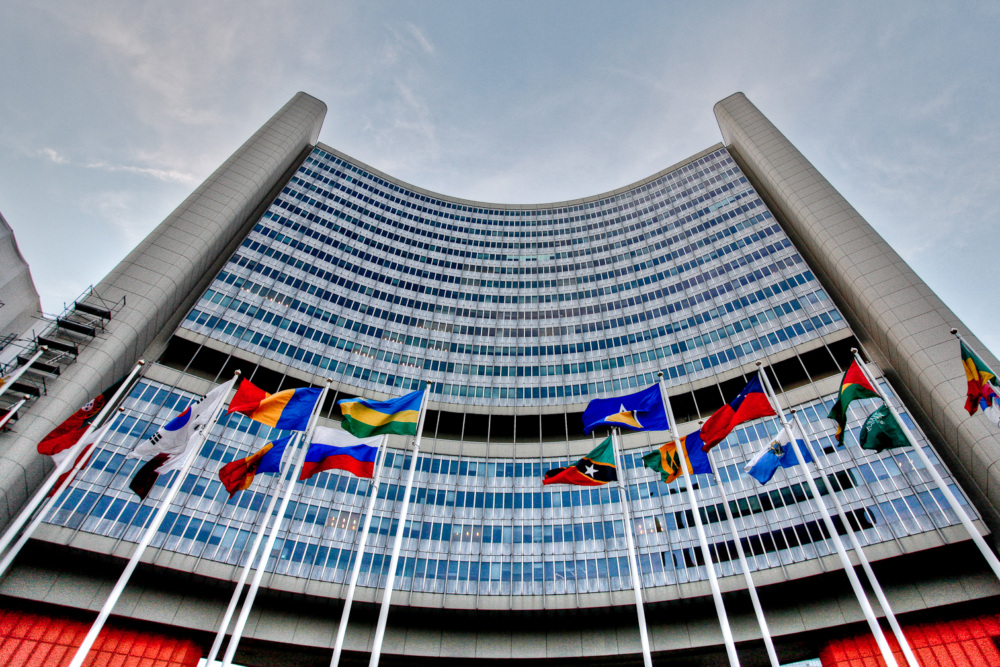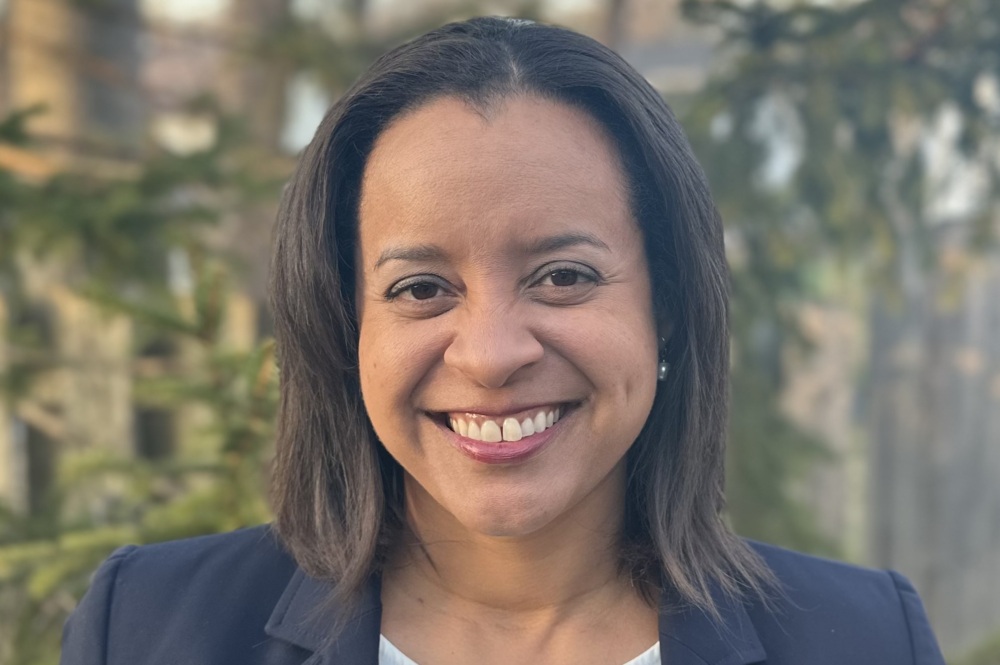
Mary Olney Fulham
Senior Communications Officer
Atomic Pulse
Tina Cordova is co-founder and executive director of the Tularosa Basin Downwinders Consortium. Since its founding in 2005, the Consortium has brought attention to the serious health effects that New Mexicans have suffered due to the development and testing of nuclear weapons in the state. NTI’s Mary Fulham and Rachel Staley Grant interviewed Tina during Hispanic American Heritage Month about her advocacy work—including recent breakthroughs in Congress—and her take on the recent attention that Oppenheimer has brought to the history of nuclear weapons in New Mexico.
Thank you for joining us, Tina. To get started, could you tell us about New Mexico’s experience with nuclear weapons and how nuclear weapons have made a mark on your life?
I grew up in a small village close to the Trinity test site. When I was young, I heard about the bomb detonated in our backyard, and I saw people with rare and aggressive cancers. When I went to college and got a degree in the sciences, I really began to understand how the health, economy, and environment of the entire state is horribly harmed by the nuclear industry.
We have the “cradle-to-grave” nuclear weapons lifecycle here: mining, testing, disposal. From the beginning of the Manhattan Project, the government disrespected and exploited native communities by building mines on sacred lands and forcing the people to work in and around the mines without safety gear. Well into the 1970s, Los Alamos National Lab dumped nuclear waste in the nearby canyons that feed the aquifer connected to the Rio Grande River, our water source. Everything south of Los Alamos was contaminated by that waste.
As a result, many people are sick from radiation exposure, which is both a health and economic issue. When people get sick with cancer they can’t hold a job.
I was diagnosed with thyroid cancer when I was 39. My dad developed cancer after me, first on the base of his tongue, then prostate cancer, and then, eight years later, again on his tongue. He was healthy and had no risk factors, but the doctors said they see it a lot in New Mexico. After the second round of cancer, my dad had all the radiation treatment he could take, so he died. Both of my grandmothers had cancer and I had two great-grandfathers that had cancer. Now my 23-year-old niece has thyroid cancer.
That’s cancer in five generations of my family.
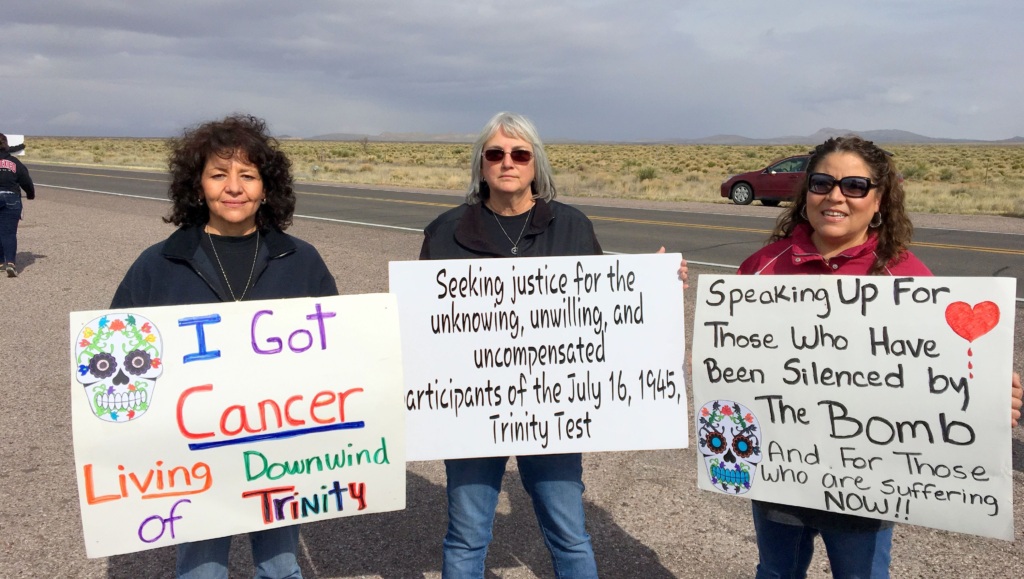
I wish I could say we were unique, but we’ve documented hundreds of families with the same experience, and the really tragic thing is that we’re seeing cancer in younger people all the time. We are forced to bury our loved ones on a regular basis.
Was there a specific moment or experience that inspired you to start the Tularosa Basin Downwinders Consortium?
Eighteen years ago, I read a letter to the editor in the local newspaper by Fred Tyler. He wrote about returning to the area after 30 years and seeing everyone sick and dying. He questioned when we would finally hold our government accountable for what they did when they detonated the Trinity bomb. I called him up and I told him that I wanted to work with him on this. So, we co-founded the organization.
I was very naïve then—I thought once the government was aware of what happened that they would come back and assist us, acknowledge us, and take care of us. But I’ve lost track of the family members and friends who started out on this journey with me and aren’t here any longer. Over time, I’ve become more steadfast. This will be my life’s work.
What is your organization working on?
Well, we’re working on a variety of things with different partners. We keep organized by having weekly meetings with downwinders, uranium workers, and community activists from across New Mexico, and places like Idaho, Arizona, New Mexico, Utah, and Guam.
Another important part of our work is conducting health surveys to document the health histories of the people in our communities. We decided a long time ago that if the government wasn’t going to do it then we needed to.
We also do an enormous amount of lobbying in Congress. In any given week, I might meet with multiple staffers or members of Congress. I also do interviews with the media. Yesterday, I met with Lois Lipman, the producer of a new documentary about us and our work advocating for the amendments to the Radiation Exposure Compensation Act (RECA) called “First We Bombed New Mexico.” It will premiere at the Santa Fe International Film Festival this month.
Can you tell us more about RECA? Why is amending it so important for downwinders?
RECA in its original form was passed in 1990, and it provided partial restitution to a few downwinder communities in Nevada, Utah, and Arizona and to people who worked in uranium mines before 1971 in a handful of states. To understand why amending RECA to include New Mexican downwinders is so important, you need to go back and understand that when the government came to this land, established the Manhattan Project, and tested the bomb at Trinity, they counted on us to be uneducated, unsophisticated, and unable to stand up for ourselves. They treated us as less than human.
Before the Trinity test, there had been a plan to evacuate the town 35 miles away by using filthy cattle trucks normally used for transporting cattle. But the government made a decision not to do it because they were nervous that it would raise alarms about the test and their top priority was keeping everything top secret. We’re talking about a time and a place where no one had electricity, telephones, or TVs, and only a few people had radios. The idea that somehow word was going to get out that they detonated an atomic bomb in the desert of New Mexico is an absolute joke. They never warned us before or told us after.
Now, we fully realize the impact this has on our lives, and it’s not as if the exposure is over. The Trinity bomb was plutonium-based, and scientists are finding plutonium all over New Mexico. Plutonium has an exceedingly long half-life, so our exposure to it is never going to end.
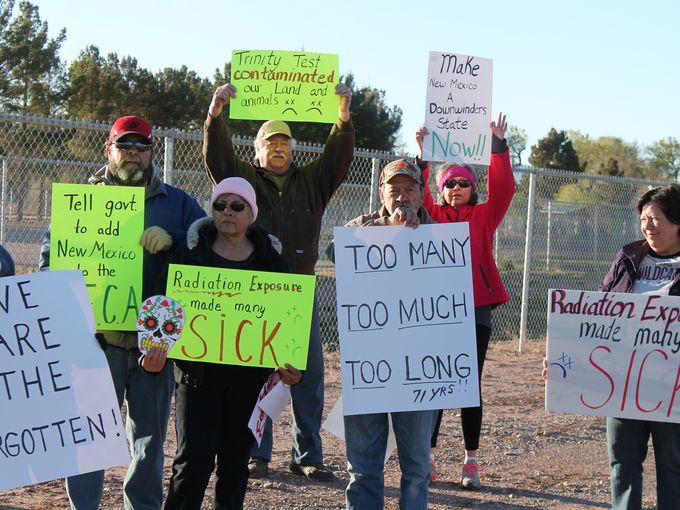 We’ve had so much taken from us that we’ll never get back, and there’s no way the government could ever compensate us for all our losses—for all the people we’ve lost. But we actually believe that the RECA amendments would provide a level of restorative justice for us. If they paid partial restitution and allowed families to regain some of what they’ve lost financially, that would be helpful.
We’ve had so much taken from us that we’ll never get back, and there’s no way the government could ever compensate us for all our losses—for all the people we’ve lost. But we actually believe that the RECA amendments would provide a level of restorative justice for us. If they paid partial restitution and allowed families to regain some of what they’ve lost financially, that would be helpful.
I mentioned earlier that we always have to travel for care. When you’re diagnosed with cancer, you have to go in search of treatment and, honestly, you may die before you get it. The town I grew up in and a lot of the towns adjacent to Trinity don’t have hospitals or clinics. And across the Navajo Nation, the pueblos, and other reservations the people rely on the Indian Health Service, which doesn’t treat cancer. I’ve lost track of the people I know who have had to travel to MD Anderson Cancer Center in Houston, but it costs an enormous amount of money to go there.
We’ve been left to hold bake sales and yard sales and enchilada dinners to raise money for these treatments. Whenever I hear about one, I think “this can’t be the best that our country has to offer.”
This is the legacy for us that no one ever talks about—that you didn’t see in Oppenheimer.
We definitely want to talk to you about Oppenheimer, but first, we know you were visiting Congress last week—did you sense any movement in the right direction on amending RECA?
I’ve been doing this work for 18 years, and for the last 13 years we have been fighting in Congress for this. We are regularly told that it’s going to cost too much. But that’s just not a reasonable answer when we know that the government spends $50 billion annually maintaining our nuclear arsenal—not adding to it, not updating it, not testing it—just simply putting it to bed at night. Plus, the government has spent $12 trillion on nuclear weapons development over time. All we’re asking for is less than one-tenth of one percent of that to take care of the American citizens who have been harmed.
When we go to D.C. or when we get on Zoom with a member of Congress, we tell them face-to-face that true American patriots are dying. We pledge allegiance to the flag, pay our taxes, and, during World War II, enlisted to fight for our country. We bought war bonds. We’ve given everything we have, and all we’re asking is that our government atone for the damage that was done to us. Mistakes were made. We certainly should be able to acknowledge that today.
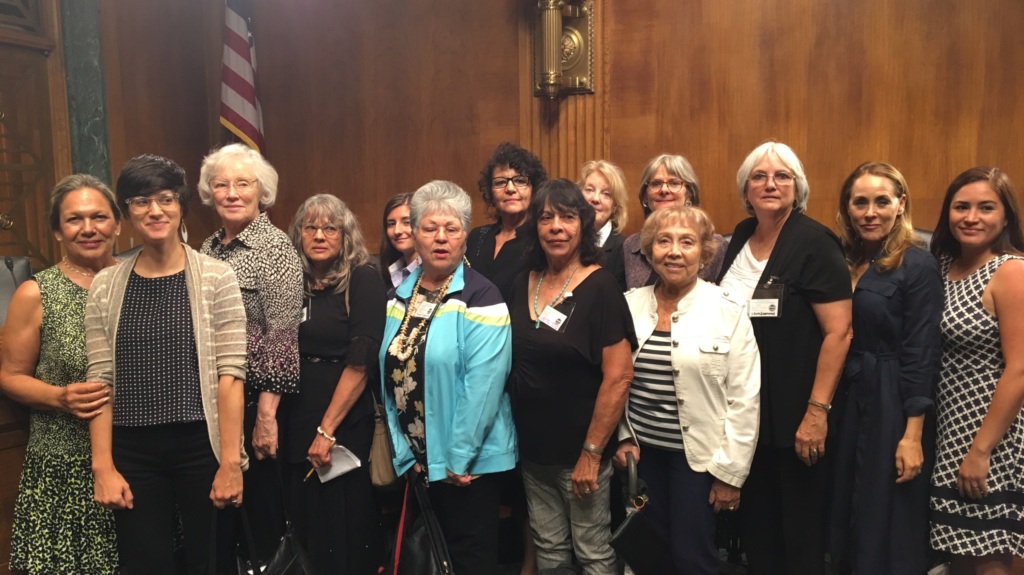 In July, there was a successful vote on the Senate floor, thanks to Senator Ben Ray Lujan (D-NM) who delivered the Democrats and Senator Josh Hawley (R-MO) who delivered the Republican votes in the Senate after the downwinders near St. Louis were added in. Now, we’re hoping that we’ll be kept in through the reconciliation of the National Defense Authorization Act (NDAA).
In July, there was a successful vote on the Senate floor, thanks to Senator Ben Ray Lujan (D-NM) who delivered the Democrats and Senator Josh Hawley (R-MO) who delivered the Republican votes in the Senate after the downwinders near St. Louis were added in. Now, we’re hoping that we’ll be kept in through the reconciliation of the National Defense Authorization Act (NDAA).
This summer’s film, Oppenheimer, brought new level of attention to the history of nuclear weapons and the testing that took place in New Mexico. What were your thoughts about the movie—did it tell the right story?
Well, I have lots of thoughts. For one thing, they don’t show a single New Mexican.
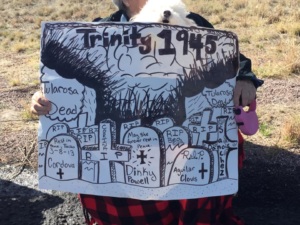 New Mexicans did the dirty work for the Manhattan Project. We built the roads, the bridges, the facilities. We were the ones who died in explosive accidents at Los Alamos and the janitors who cleaned up. Our women were bussed up there and cooked every meal, cleaned every house, changed every diaper, and fed every baby. We lived as close as 12 miles to the Trinity site. None of that is shown in the movie.
New Mexicans did the dirty work for the Manhattan Project. We built the roads, the bridges, the facilities. We were the ones who died in explosive accidents at Los Alamos and the janitors who cleaned up. Our women were bussed up there and cooked every meal, cleaned every house, changed every diaper, and fed every baby. We lived as close as 12 miles to the Trinity site. None of that is shown in the movie.
This movie will make hundreds of millions of dollars and have millions of views, and they wouldn’t even include a note at the end of the film acknowledging the sacrifice and suffering of New Mexicans as a result of the Manhattan Project. And for me, that’s just more of the same exploitation.
We are discussing what happened to New Mexicans during Hispanic American Heritage Month and November is Native American Heritage Month. This is a season when our country is honoring and celebrating Hispanic and Native Americans and their contributions and sacrifices, yet their presence—willing or otherwise—in the history of nuclear weapons is too often forgotten or dismissed.
New Mexico has always been the only minority majority state. More than 60% of the people who live here are people of color, primarily Mexican American and Native American. We’ve lived here forever. There are footprints that were recently discovered at White Sands National Monument—literally adjacent to the Trinity site—that date back 23,000 years.
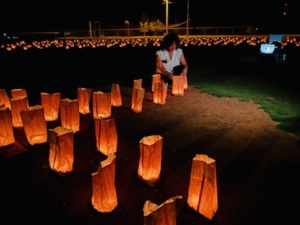 The crazy thing is that people come to the Trinity site now for fun; it’s open twice a year, and it’s happening later this month on October 21st. People take their kids and pets, and they let them roll around in the dirt with radiological danger warning signs everywhere. Our organization stages a peaceful demonstration by the entrance to communicate the counter-narrative and remind everyone that people lived here and were deeply harmed by the test.
The crazy thing is that people come to the Trinity site now for fun; it’s open twice a year, and it’s happening later this month on October 21st. People take their kids and pets, and they let them roll around in the dirt with radiological danger warning signs everywhere. Our organization stages a peaceful demonstration by the entrance to communicate the counter-narrative and remind everyone that people lived here and were deeply harmed by the test.
It makes me worried that, as we’re looking at a nuclear arms race right now, people don’t realize the human devastation that’s associated with these weapons. People need to recognize the nuclear legacy that so many Americans are already living with, and why it’s not sustainable to keep ramping up our nuclear arsenal and think that somehow it will lead to a good outcome.
Thank you so much for sharing all of this—it has been so moving to hear about your experience and your work. We hope to hear good news on RECA very soon.
Sign up for our newsletter to get the latest on nuclear and biological threats.
Jupiter Huang, NTI’s Communications intern, had the opportunity to speak with Mackenzie Knight, the program associate for Global Risk at the Federation of American Scientists (FAS), for this inaugural post of the Young Voices series.
Governments should use the 2024 International Conference on Nuclear Security (ICONS) to reaffirm their commitment to preventing nuclear catastrophe.
For Black History Month, Jupiter Huang, NTI’s communications intern, had the opportunity to ask Tiffany Blanchard-Case, director of the Office of Nuclear Material Removal and Elimination at the National Nuclear Security Administration (NNSA), about the importance of mentorship and her advice for young people interested in working on nuclear issues.
